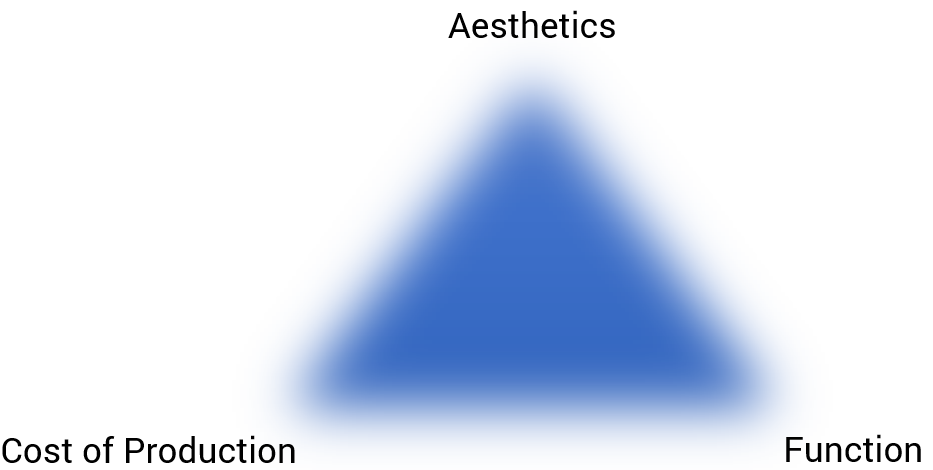The Design Mix consists of three components, often arranged in a triangle,
- Aesthetics – How the product looks.
- Function – How the product performs its task.
- Economic Manufacture (Cost to Produce) – How much it costs to produce the product.
Examples of paradigms the Design Mix,
Aesthetics
Maintaining a good product image that will appeal to customers is only one small portion of aesthetics, one must also consider consistency and differentiation. A product may be very aesthetic but may have shortfalls when it is used or may have a much lower profit margin than other products of lesser quality. A product like a smartphone that is top of the line may look and feel better than its competitors, however if it has a small processor that cannot perform tasks to the same standard as other phones on the market, it may be left behind when other competition sacrifices some of their aesthetics for performance, such as a camera bump or metal case for use as an antenna for better reception. Typically when a product is made, Aesthetics are one of the first considerations, whilst also factoring in cost.
Function
An Ink-jet printer is much less functional than a modern day laser printer, however for most people, all they require is at most a few family photos, therefore a cheap, and a possibly unreliable printer would be more preferable than an expensive laser printer.
Additionally, most people would much prefer a non-consumable product over one that requires a refill or maintenance if the products are functionally similar, with the exceptions being things like coffee machines, where it is much quicker to have it made from a capsule.
Therefore the functionality of a product and its associated cost must also be considered.
Economic Manufacture
A company that wishes to sell its products must do so at a profit, selling highly functional products with aesthetic appeal may move a lot of orders, but if the business does not cover its break-even cost it may struggle to expand.
Design Mix Triangle
A Design Mix Triangle can be used to show the struggles between the relationship of each corner, a product may be functional and aesthetic, but not economical to manufacture.

Changes in Response to Social Change
- Concern over limited global resources
- Reducing Waste
- Reusing Materials
- Recycling
- Reducing Consumables
- Ethical Sourcing and Management
- Fair Trade